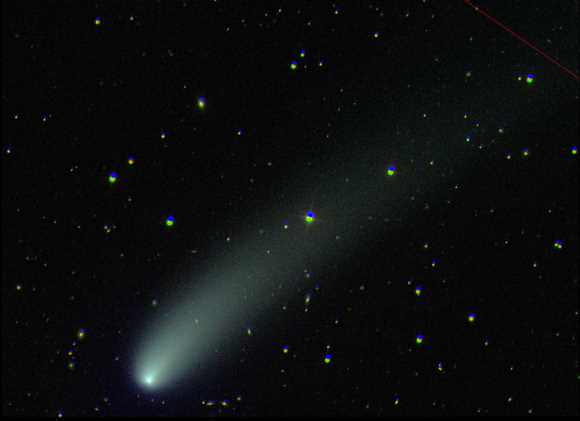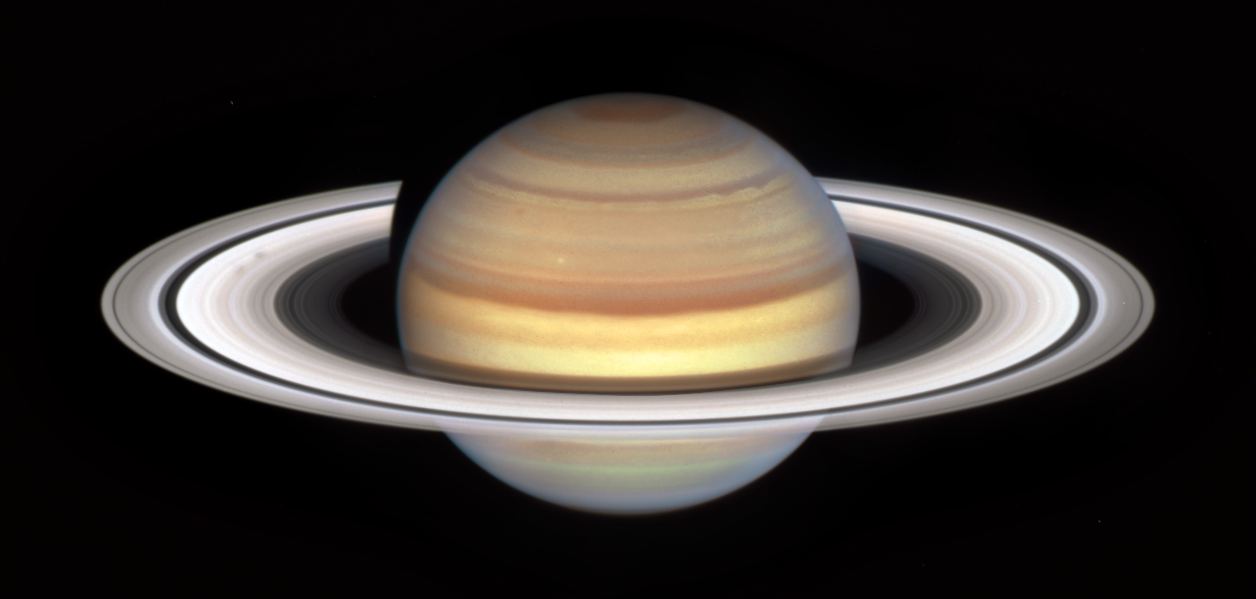Located in Tuscon, Arizona, the National Optical-Infrared Astronomy Research Laboratory (NOIRLab) is a national facility consisting of four observatories that provide astronomers affiliated with any US institution with access to observing time. As part of its mission to advance astronomy and science education, NOIRLab recently announced the release of the 88 Constellations Project, a collection of free, high-resolution, downloadable images of all IAU-recognized constellations. This project is an educational archive that is free for all and includes the largest open-source all-sky photo of the night sky.
Continue reading “NOIRLab Launches Collection of Hi-Res Images of 88 IAU-recognized Constellations”Saturn’s Rings Might Be Really Old After All
Saturn’s rings are among the most glorious, stunning, and well-studied features in the Solar System. However, their age has been difficult to ascertain. Did they form billions of years ago when the planet and the Solar System were young? Or did they form in the last few hundred millions of years?
The latest new research shows that the iconic rings are, in fact, very old.
Continue reading “Saturn’s Rings Might Be Really Old After All”Covering an Asteroid With Balls Could Characterize Its Interior
Exploring asteroids and other small bodies throughout the solar system has gotten increasingly popular, as their small gravity wells make them ideal candidates for resource extraction, enabling the expansion of life into the solar system. However, the technical challenges facing a mission to explore one are fraught – since they’re so small and variable, understanding how to land on one is even more so. A team from the University of Trieste in Italy has proposed a mission idea that could help solve that problem by using an ability most humans have but never think about.
Continue reading “Covering an Asteroid With Balls Could Characterize Its Interior”New Image Revealed by NASA of their New Martian Helicopter.
Ingenuity became the first aircraft to fly on another world in the first half of 2021. It explored the Martian terrain from above proving that powered air flight was a very efficient way to move around alien worlds. Now NASA have released a computer rendering of their next design, the Mars Chopper!
Continue reading “New Image Revealed by NASA of their New Martian Helicopter.”NASA’s Parker Solar Probe Makes its Record-Breaking Closest Approach to the Sun
In August 2018, NASA’s Parker Solar Probe (PSP) began its long journey to study the Sun’s outer corona. After several gravity-assist maneuvers with Venus, the probe broke Helios 2‘s distance record and became the closest object to the Sun on October 29th, 2018. Since then, the Parker probe’s highly elliptical orbit has allowed it to pass through the Sun’s corona several times (“touch the Sun”). On December 24th, 2024, NASA confirmed that their probe made its closest approach to the Sun, passing just 6 million km (3.8 million mi) above the surface – roughly 0.04 times the distance between the Sun and Earth (0.04 AU).
Continue reading “NASA’s Parker Solar Probe Makes its Record-Breaking Closest Approach to the Sun”Meteor Showers May One Day Help Protect Humanity!

For centuries, comets have captured our imagination. Across history they have been the harbingers of doom, inspired artists and fascinated astronomers. These icy remnants of the formation of the Solar System hold secrets to help us understand the events nearly 5 billion years ago. But before these secrets can be revealed, comets have to be studied and to study them they need to be found. A team of researchers have developed a technique to hunt down comets based upon data from meteor showers and to assess if they pose any threat to us here on Earth!
Continue reading “Meteor Showers May One Day Help Protect Humanity!”NASA is Considering Designs and Simulations to Prepare Astronauts for Lighting Conditions Around the Lunar South Pole

In the coming years, NASA and other space agencies will send humans back to the Moon for the first time since the Apollo Era—this time to stay! To maximize line-of-sight communication with Earth, solar visibility, and access to water ice, NASA, the ESA, and China have selected the Lunar South Pole (LSP) as the location for their future lunar bases. This will necessitate the creation of permanent infrastructure on the Moon and require that astronauts have the right equipment and training to deal with conditions around the lunar south pole.
This includes lighting conditions, which present a major challenge for science operations and extravehicular activity (EVA). Around the LSP, day and night last for two weeks at a time, and the Sun never rises more than a few degrees above the horizon. This creates harsh lighting conditions very different from what the Apollo astronauts or any previous mission have experienced. To address this, the NASA Engineering and Safety Council (NESC) has recommended developing a wide variety of physical and virtual techniques that can simulate the visual experiences of Artemis astronauts.
Continue reading “NASA is Considering Designs and Simulations to Prepare Astronauts for Lighting Conditions Around the Lunar South Pole”Neutron Stars With Less Mass Than A White Dwarf Might Exist, and LIGO and Virgo Could Find Them

Most of the neutron stars we know of have a mass between 1.4 and 2.0 Suns. The upper limit makes sense, since, beyond about two solar masses, a neutron star would collapse to become a black hole. The lower limit also makes sense given the mass of white dwarfs. While neutron stars defy gravitational collapse thanks to the pressure between neutrons, white dwarfs defy gravity thanks to electron pressure. As first discovered by Subrahmanyan Chandrasekhar in 1930, white dwarfs can only support themselves up to what is now known as the Chandrasekhar Limit, or 1.4 solar masses. So it’s easy to assume that a neutron star must have at least that much mass. Otherwise, collapse would stop at a white dwarf. But that isn’t necessarily true.
Continue reading “Neutron Stars With Less Mass Than A White Dwarf Might Exist, and LIGO and Virgo Could Find Them”Webb Observes Protoplanetary Disks that Contradict Models of Planet Formation

The James Webb Space Telescope (JWST) was specifically intended to address some of the greatest unresolved questions in cosmology. These include all of the major questions scientists have been pondering since the Hubble Space Telescope (HST) took its deepest views of the Universe: the Hubble Tension, how the first stars and galaxies came together, how planetary systems formed, and when the first black holes appeared. In particular, Hubble spotted something very interesting in 2003 when observing a star almost as old as the Universe itself.
Orbiting this ancient star was a massive planet whose very existence contradicted accepted models of planet formation since stars in the early Universe did not have time to produce enough heavy elements for planets to form. Thanks to recent observations by the JWST, an international team of scientists announced that they may have solved this conundrum. By observing stars in the Small Magellanic Cloud (LMC), which lacks large amounts of heavy elements, they found stars with planet-forming disks that are longer-lived than those seen around young stars in our Milky Way galaxy.
Continue reading “Webb Observes Protoplanetary Disks that Contradict Models of Planet Formation”James Webb’s Big Year for Cosmology
The James Webb Space Telescope was designed and built to study the early universe, and hopefully revolutionary our understanding of cosmology. Two years after its launch, it’s doing just that.
Continue reading “James Webb’s Big Year for Cosmology”





